
Conservation campaigns - Nova Scotia
" . . . recall the image of the planet from outer space: a single entity in which air, water, and continents
are interconnected. That is our home." - David Suzuki
home |
about |
fracking |
victories
|
campaigns
|
photo pages
|
history
|
library
|
join
|
contact
|
rudy's 90th birthday
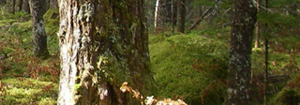
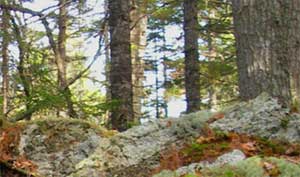
Click for our conservation campaigns:
Forestry:
Friends of Nature actively lobbies against destructive forestry methods such as clear-cutting and herbicide spraying. We are also against biomass harvesting.
Clearcutting: The destructive effects of clearcutting include:
-
Soil desiccation (extreme drying)
-
Erosion
-
Loss/fragmentation of wildlife habitat
-
Sedimentation of waterways
-
"Hit and Run" overland water flow
-
Adverse impacts on fish and many bird species
-
Loss of carbon to the atmosphere
-
Nutrient depletion
-
Increased risk of insect infestation
-
Poor regeneration
(source: Ecology Action Centre Forestry Program)
Forests do not need to be clearcut in order to provide a livelihood to foresters. A well-managed forest can be a biodiverse ecosystem and wildlife habitat, as well as providing livelihood to foresters for generations to come.
Take action!
If you are concerned about the forestry methods in Nova Scotia, please write to your elected
officials or send a letter to the editor to your local paper or the provincial Chronicle Herald.
Click contact information for Nova Scotia's Legislative Assembly
Herbicide Spraying:

Each year, dangerous chemical herbicides are sprayed on Nova Scotia's forests by government and the forestry industry.
The active ingredient in the herbicides currently used - glyphosate - has been linked to serious human health problems such as
cancer, respiratory illness and birth defects. It is also detrimental to Nova Scotia's water supply, wildlife and ecosystem.
We believe that these herbicides should be banned in Nova Scotia, as they are in other provinces like Quebec.
More information on herbicide spraying can be found on the Sierra Club Atlantic website.
Take action!
If you are concerned about herbicide spraying in Nova Scotia, please write to your elected officials, sign the Stop the Spray Petition, write to your elected
officials or send a letter to the editor to your local paper or the provincial Chronicle Herald.
Click contact information for Nova Scotia's Legislative Assembly
Forest Biomass:
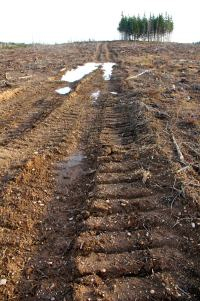
Jamie Simpson photo
Click for the latest information on
Forest Biomass
While the Nova Scotia government's renewable energy targets are to be commended, reaching this goal through the scraping of
our forests to produce forest biomass energy is not acceptable.
"This is the worst of the worst, and the science is clear that this practice is not sustainable - it's detrimental to
wildlife, water systems, and soil productivity. Furthermore, it causes a net loss of carbon from our forests and forest soils.
It's not a carbon-neutral energy source - that's nothing but a myth," says Jamie Simpson, a forester with the
Ecology Action Centre.
Approximately 260 hectares (650 acres) of Nova Scotia have already been whole-tree and clearcut harvested by Northern
Pulp, with more cutting planned.
More information on biomass harvesting and its destructive effects can be found on the
Ecology Action Centre Forestry
Program's website.
Take action!
If you are concerned about biomass harvesting in Nova Scotia, please write to your elected officials, sign the Stop the Spray Petition, write to your elected
officials or send a letter to the editor to your local paper or the provincial Chronicle Herald.
Click contact information for Nova Scotia's Legislative Assembly
Holden Lake:
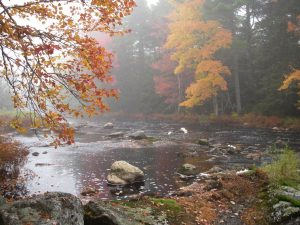
The Holden Lake area covers approximately 4 500 hectares (11 000 acres) of land in Lunenburg County, Nova Scotia, along the Gold
River from Beech Hill to Walden. The majority of the land is currently Crown Land, with 4 large private parcels within or adjacent.
Some features of the land include:
-
9 km of undeveloped lake frontage, 1.3 km of river frontage, and 8 brooks
-
Known merganser nest area
-
Known fisher habitat
-
Deer wintering area
-
Rich ravine with waterfall
-
Confirmed salmon river
-
Significant old and unique forest stands at 6 or 7 locations
Clay Island planting:
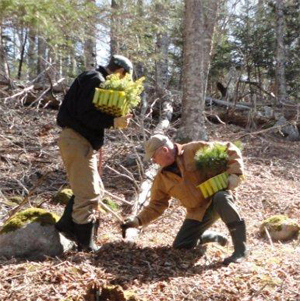
On April 23, 2011, Friends of Nature went out to Clay Island, which is owned by Chester Municipality (Nova Scotia).
A large section of the island has a stand of yellow birch, but
not much else. The FON objective was to provide more Acadian
Forest diversity by planting 90 each of Eastern Hemlock and White Pine in
the stand of yellow birch.
Click and see our
Clay Island Planting photo page
Clay Island Planting 2012 photo page
Dedicated to maintaining the balance of nature
for the mutual benefit of people and their plant & animal friends.
home | about | fracking | victories | campaigns | photo pages | history | library | join | contact | rudy's 90th birthday


Click for our conservation campaigns:
Forestry:
Friends of Nature actively lobbies against destructive forestry methods such as clear-cutting and herbicide spraying. We are also against biomass harvesting.
Clearcutting: The destructive effects of clearcutting include:
- Soil desiccation (extreme drying)
- Erosion
- Loss/fragmentation of wildlife habitat
- Sedimentation of waterways
- "Hit and Run" overland water flow
- Adverse impacts on fish and many bird species
- Loss of carbon to the atmosphere
- Nutrient depletion
- Increased risk of insect infestation
- Poor regeneration
(source: Ecology Action Centre Forestry Program)
Forests do not need to be clearcut in order to provide a livelihood to foresters. A well-managed forest can be a biodiverse ecosystem and wildlife habitat, as well as providing livelihood to foresters for generations to come.
Take action!
If you are concerned about the forestry methods in Nova Scotia, please write to your elected
officials or send a letter to the editor to your local paper or the provincial Chronicle Herald.
Click contact information for Nova Scotia's Legislative Assembly
Herbicide Spraying:

Each year, dangerous chemical herbicides are sprayed on Nova Scotia's forests by government and the forestry industry. The active ingredient in the herbicides currently used - glyphosate - has been linked to serious human health problems such as cancer, respiratory illness and birth defects. It is also detrimental to Nova Scotia's water supply, wildlife and ecosystem.
We believe that these herbicides should be banned in Nova Scotia, as they are in other provinces like Quebec. More information on herbicide spraying can be found on the Sierra Club Atlantic website.
Take action!
If you are concerned about herbicide spraying in Nova Scotia, please write to your elected officials, sign the Stop the Spray Petition, write to your elected
officials or send a letter to the editor to your local paper or the provincial Chronicle Herald.
Click contact information for Nova Scotia's Legislative Assembly
Forest Biomass:

Jamie Simpson photo
While the Nova Scotia government's renewable energy targets are to be commended, reaching this goal through the scraping of our forests to produce forest biomass energy is not acceptable.
"This is the worst of the worst, and the science is clear that this practice is not sustainable - it's detrimental to wildlife, water systems, and soil productivity. Furthermore, it causes a net loss of carbon from our forests and forest soils. It's not a carbon-neutral energy source - that's nothing but a myth," says Jamie Simpson, a forester with the Ecology Action Centre.
Approximately 260 hectares (650 acres) of Nova Scotia have already been whole-tree and clearcut harvested by Northern Pulp, with more cutting planned.
More information on biomass harvesting and its destructive effects can be found on the Ecology Action Centre Forestry Program's website.
Take action!
If you are concerned about biomass harvesting in Nova Scotia, please write to your elected officials, sign the Stop the Spray Petition, write to your elected
officials or send a letter to the editor to your local paper or the provincial Chronicle Herald.
Click contact information for Nova Scotia's Legislative Assembly
Holden Lake:

The Holden Lake area covers approximately 4 500 hectares (11 000 acres) of land in Lunenburg County, Nova Scotia, along the Gold
River from Beech Hill to Walden. The majority of the land is currently Crown Land, with 4 large private parcels within or adjacent.
Some features of the land include:
- 9 km of undeveloped lake frontage, 1.3 km of river frontage, and 8 brooks
- Known merganser nest area
- Known fisher habitat
- Deer wintering area
- Rich ravine with waterfall
- Confirmed salmon river
- Significant old and unique forest stands at 6 or 7 locations
Clay Island planting:

On April 23, 2011, Friends of Nature went out to Clay Island, which is owned by Chester Municipality (Nova Scotia).
A large section of the island has a stand of yellow birch, but
not much else. The FON objective was to provide more Acadian
Forest diversity by planting 90 each of Eastern Hemlock and White Pine in
the stand of yellow birch.
Click and see our
Clay Island Planting photo page
Clay Island Planting 2012 photo page
Dedicated to maintaining the balance of nature
for the mutual benefit of people and their plant & animal friends.
©2011 - 2013 Friends of Nature - all rights reserved